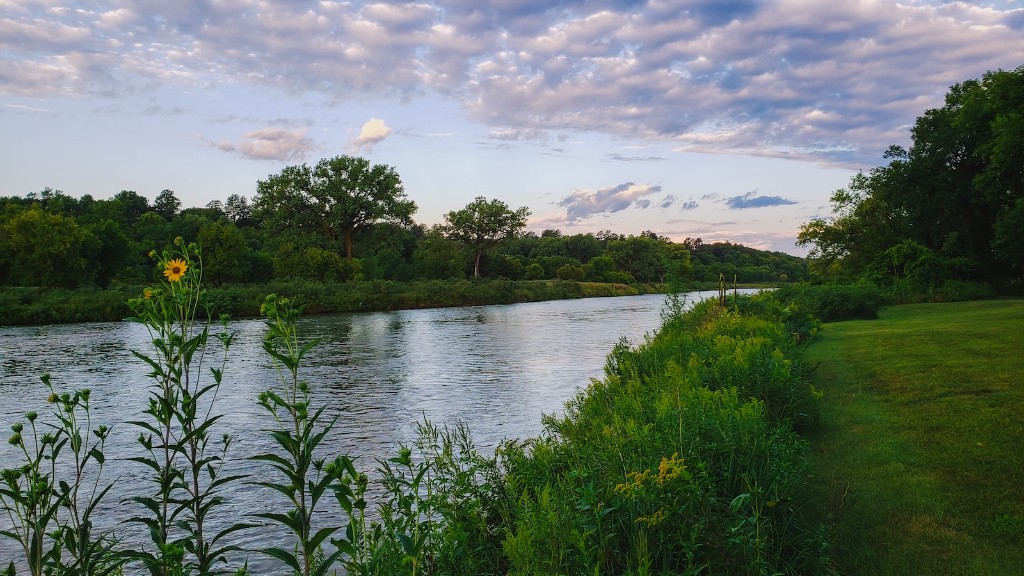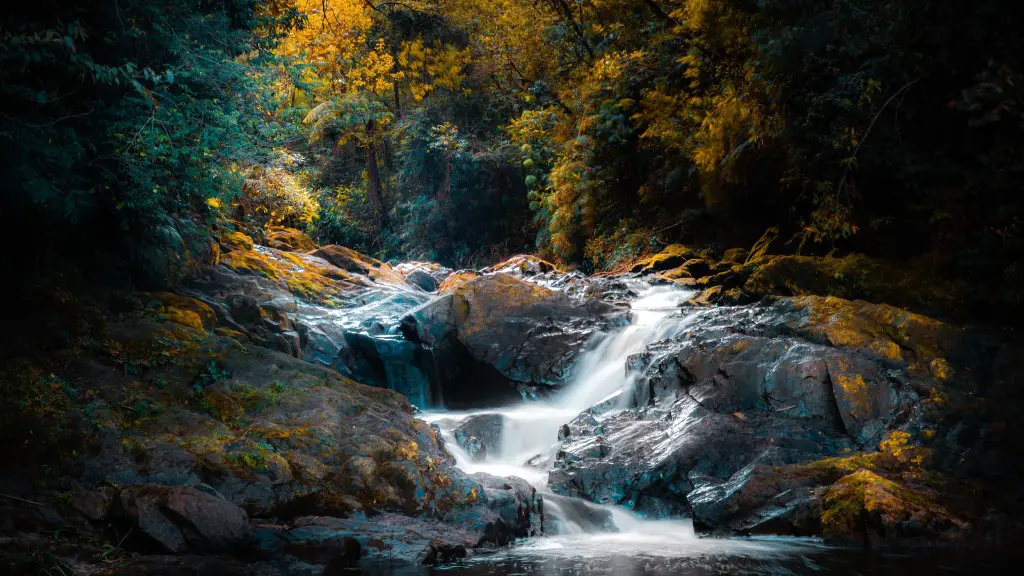The Mississippi River is a vital artery of the United States, flowing from the headwaters of Minnesota and Wisconsin, through the heartland of ten states, and finally out to the Gulf of Mexico.Considering its broad ecosystem, the Mississippi River is home to many species of fish, plants, and mammals, plus countless species of birds, amphibians, and reptiles.It provides water for industry, recreation, and drinking; it’s also the lifeblood of commerce and transport, providing a major route for barges and crude oil tankers.In short, this major river system is vital to the United States.Unfortunately, various threats to water quality have taken a toll on the Mississippi River.
The most considerable threat to the Mississippi River is pollution. Population growth and increased development have led to runoff from both urban and rural areas, which carries increased amounts of pollutants into the river.Agricultural pollution is another major source of harm, with fertilizer runoff and animal waste containing high levels of nitrogen and phosphorous.These chemicals feed into the river system and can cause algae blooms, which deplete oxygen levels and create toxic conditions for fish and other aquatic life.In addition, microbial contaminants from sewage and industrial sources can collude with nutrient pollution and create health risks for humans, animals, and marine life.
Fortunately, there are several organizations and actions in place to protect the health and sustainability of the Mississippi River.The Environmental Protection Agency (EPA) provides a variety of programs to help reduce the amount of pollutants entering the river, such as best management practices designed to minimize agricultural runoff. The Army Corps of Engineers is also responsible for two of the most important initiatives aimed at restoring the health of the river, the Navigation and Ecosystem Sustainability Program and the Comprehensive Plan for the Mississippi River and Tributaries.These two organizations, along with many state and local agencies, are working together to create a collaborative approach to conserve and protect the Mississippi River and its tributaries.
The Mississippi River is also being supported by a wide range of conservation organizations from all levels of government. Some non-profit organizations, such as the Mississippi River Collaborative, have partnered with both federal and state agencies to promote collaboration and research into best practices for protecting and conserving the river.They work with local communities, often partnering with educators, to help people understand the importance of the river and how we can all help to protect it.
The EPA also has its own set of standards that has set limits on the amount of pollution which can enter the river each year and regularly monitors the river’s health and quality. Meanwhile, the U.S. Fish and Wildlife Service and other state wildlife agencies are working to restore wildlife habitat along the Mississippi River, while still allowing for human development and recreation.In addition, the National Resources Conservation Service has a number of programs to promote the conservation of rivers and wetlands, which help to protect the Mississippi River as well.
Finally, much of the conservation effort is being driven by the individuals who live and work along the Mississippi River. Communities are developing and restoring wetlands, planting native vegetation, and using best practices to reduce pollution and protect the river. Citizens are also becoming more aware of the impact of their daily activities and how it can ultimately improve or degrade the state of the Mississippi River.
Citizen-led Cleanup Efforts
There are a number of citizen-led cleanup efforts taking place along the Mississippi River. These efforts are aimed at improving the quality of the water, reducing the amount of pollutants entering the river as well as educating people about the long-term impact that their actions can have on the environment.The Float the River Mississippi is a volunteer-based organization developing effective strategies to remove and reduce pollutants entering the Mississippi River, primarily focusing on reducing nutrient runoff from farms, pesticides and herbicides, garbage and plastic, as well as other pollutants.
Along with Float the River Mississippi, there are other organizations such as Mississippi River Strike Force, dedicated to cleaning up some of the most polluted and polluted areas of the Mississippi River. The Strike Force engages local communities and organizations around specific threats and focuses on improvements through increased awareness and support.These organizations rely on donations and volunteers to help keep them running and to support the local communities that often suffer most from the pollution of the Mississippi River.
As well as these local and regional efforts, there are several federal programs focusing on the cleanup of the Mississippi. For example, the National Estuary Program (NEP) has identified certain states and waterways as estuaries of national significance and is actively working to address some of the most pressing issues facing the river corridor, such as water quality, habitat restoration, and improving sturgeon populations.The NEP also provides grants to help support the local citizens and organizations, who are actively trying to protect and improve the state of the Mississippi River.
Long-term Conservation Measures
One of the most important, long-term conservation measures being undertaken to protect the Mississippi River is the restoration of natural habitats. The U.S. Army Corps of Engineers is leading the effort to restore wetlands and riparian areas, which are essential for maintaining healthy aquatic populations. In addition, local government agencies and the U.S. Fish and Wildlife Service are partnering to create parks and sanctuaries that protect and enhance the native flora and fauna of the region.
The Mississippi River’s delicate balance of humans and nature is also being safeguarded by increased regulations and programs focused on thriving ecosystems. For example, the Ramsar Convention on Wetlands of International Importance defines and promotes the wise use of wetlands to ensure they are beneficial and remain healthy. The entity identifies biomes of significance and recognizes the importance of these ecosystems and their species, while putting protective measures in place to ensure they are sustained.
Overall, a variety of measures are being employed to ensure the protection of the Mississippi River. Federal, state, and local agencies, non-profit organizations, and citizens are all working to mitigate the current threats, improve water quality, restore natural habitats, and increase awareness about the importance of the river and its role in sustaining human and animal life.
Putting People First
The people who live and work along the Mississippi River are a cornerstone of the effort to protect its health and sustainability. Improving their everyday lives through stronger education, developing sustainable economic opportunity, and creating recreational outlets have become integral aspects of the conservation effort. The Mississippi River Valley Initiative, a partnership between the National Park Service, the Department of Agriculture, and the USACE, provides education and resources to support the remote communities along the Mississippi, while still enabling them to reap the benefits of being a part of the Mississippi River system.
Furthermore, local organizations are promoting economic development and job opportunities to help redistribute resources and empower people to be better environmental stewards. For example, the Mississippi River Collaborative has launched the Pathways Employment Initiative, which focuses on connecting local businesses and services to the economic opportunities associated with the Mississippi River. This program helps individuals gain the skills they need to access the full range of jobs the river supports, while at the same time helping to preserve and protect its long-term health.
Recreation is another element of importance when it comes to putting people first when protecting the Mississippi River. Parks, trails, and other recreational opportunities along the Mississippi River help people build an appreciation and understanding for the river, while also helping to reduce the demand for services like fishing, hunting, and boating, which can put a strain on the river’s natural resources.The Mississippi National River and Recreation Area provides educational programs and recreational opportunities in order to foster this appreciation, while also helping to protect the river and its natural habitats.
Public Involvement and Action
Given its vast importance, the health and sustainability of the Mississippi River is ultimately in the hands of the public. It is important that each individual take action in order to protect the river, whether through minimizing water pollution as well as energy and resources consumption, or developing and implementing environmental education programs.It is also important that people get not just involved but actively involved in the effort to protect the Mississippi River. This could be done through outreach and engagement with the various organizations and programs that are focused on preserving its health, or even through advocacy and raising awareness in the local community.
The Mississippi River watershed is a national treasure, and it must be preserved and protected for future generations to come. Understanding the threats it faces, learning about the ways in which it can be protected and supported, and taking action to make a difference are key components of promoting its ongoing health and sustainability. Doing this will ensure the long-term health of the river and its valuable ecosystems, as well as its contribution to local communities and the nation.
Generating Political Will
In order for the Mississippi to remain healthy and safe for generations to come, it is important to ensure that elected representatives are also doing their part. One way to do this is to generate political will by having members of congress sign onto legislation that will help protect and promote the river.The Mississippi River Congressional Taskforce is a bipartisan effort to ensure the health of the river, making sure lawmakers understand the importance of the river and its waterways, and driving elected officials to pass legislation that will ensure its long-term sustainability.
Members of Congress must also be aware of the economic and environmental benefits that come from the Mississippi and its tributaries, and the critical and diverse ecosystems that connect to it. This includes increased access to clean and safe drinking water, opportunities for outdoor recreation, commercial navigation of the river, and more.Raising awareness of these issues is essential in order to attract and convince elected leaders to pass and support initiatives that will protect and promote the river.
The Mississippi River is an invaluable asset and a source of life and livelihoods, and it is important to ensure its long-term health and sustainability. Taking action is key to this, whether it is volunteering, donating, or raising awareness.By working together, and ensuring that political will is generated and proper measures put in place, the Mississippi River can be enjoyed for many generations to come.
Sustainable Energy Solutions
The Mississippi is also being supported through the implementation of sustainable energy solutions such as wind and solar projects. These projects can reduce the pollution from traditional sources of energy, as well as provide jobs and economic opportunities for communities along the river.The U.S. Army Corps of Engineers is currently working on a renewable energy development project along the river, which will provide power to over a hundred thousand homes and businesses through distributed, interconnected solar and wind solutions.
In addition, the Department of Energy has invested in several projects that will help promote the efficiency of the river ecology and hydropower. These projects not only help reduce fossil fuel emissions and improve air quality, but they also increase the amount of clean energy available to communities along the Mississippi.Furthermore, these investments also help to promote economic development in the region by creating jobs, reducing energy costs, and providing sources of clean energy.
As the Mississippi River faces a variety of threats, it is important to ensure its health and sustainability through cultivating comprehensive solutions. These solutions must be multi-faceted and consider both the environment and the local community.Only by taking a holistic approach, through a combination of traditional and new strategies and technologies, can the Mississippi River remain healthy for generations to come.





